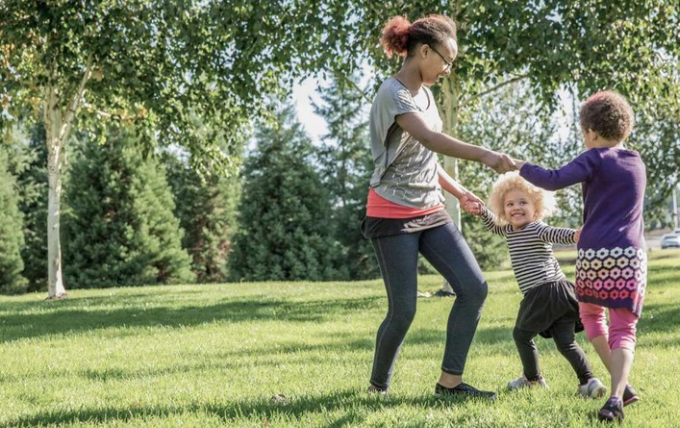Self-soothing techniques are practices or actions that an individual uses to bring themselves comfort or relieve tension. They can range from physical activities to sensory input or even mental strategies.
While everyone’s preferences may vary, understanding and exploring these techniques can make a significant difference in the daily lives of individuals with autism.
The Importance of Self-Soothing for Autism
For individuals with autism, emotional and sensory regulation can sometimes be challenging. When exposed to sensory stimuli, such as loud noises, bright lights, or strong smells, it can lead to heightened levels of discomfort or anxiety. This discomfort may result in behaviors such as meltdowns, self-injury, or withdrawal.
Having effective self-soothing techniques can help to prevent or minimize these responses by providing the individual with tools to manage their sensory input or emotional states.
In addition, self-soothing promotes independence. By learning ways to calm themselves, individuals with autism can become more resilient in stressful situations, gain a sense of self-control, and even improve their social interactions.

Sensory-Based Self-Soothing Techniques
Many people with autism are either hypersensitive or hyposensitive to sensory input. Some may find specific sensory experiences overwhelming, while others might need more stimulation to feel engaged or calm.
Understanding how to navigate sensory processing can lead to the discovery of helpful self-soothing techniques.
Fidget toys are often recommended for people on the autism spectrum to help them manage excess energy, focus, or nervous energy. Items like spinners, textured balls, and putty are ideal for providing tactile stimulation and can serve as a physical outlet for stress.
These tools can help individuals focus on something safe and soothing, rather than becoming overwhelmed by their environment. Many find that these items can reduce anxiety by giving them a small sense of control over their immediate surroundings.
For those who seek calming pressure, weighted blankets or vests can be incredibly beneficial. The deep pressure stimulation can mimic the feeling of being hugged, which is soothing for many on the autism spectrum. This can help to regulate the nervous system, promoting a sense of security and calm.
Using weighted blankets during sleep or while resting can help to reduce stress and anxiety, making it easier to relax.

Visual Techniques for Self-Soothing
Visual input plays a huge part in managing stress and anxiety. Some individuals with autism may become overwhelmed by visual stimuli, such as bright lights or crowded spaces.
On the other hand, others may use visual input to focus their attention and calm themselves.
A calm-down jar is a simple but highly effective tool for soothing. It usually contains water, glitter, and glue inside a bottle or jar. When shaken, the glitter swirls around in the water, creating a mesmerizing, slow-motion effect. Watching the glitter settle can be incredibly relaxing and helps to distract from stress.
This tool can also help individuals ground themselves in the present moment, allowing them to refocus when feeling anxious or upset.
Meanwhile, for those who experience anxiety due to unpredictability or transitions, visual supports can be immensely helpful. Visual schedules, for example, can break down the day into clear steps, making transitions more manageable.
Using visual timers can also give individuals clear expectations of how long an activity or transition will take. This helps reduce anxiety by minimizing the fear of the unknown and providing structure.
Movement-Based Techniques
Physical movement is another form of self-soothing that can help to release pent-up energy and reduce anxiety. Movement-based techniques can range from vigorous physical activities to more gentle exercises.
For individuals who benefit from mindful movement, deep breathing and stretching exercises can be highly effective. Deep breathing helps slow the heart rate, oxygenate the brain, and calm the body.

However, for those who enjoy more active forms of self-soothing, engaging in physical activities such as running, walking, or jumping on a trampoline can be a good outlet for energy.
Physical exercise helps release tension and stimulates the production of endorphins, which are natural mood boosters. It is important to choose activities that the individual enjoys and feels comfortable with, as the goal is to provide both stimulation and comfort.
Cognitive and Emotional Self-Soothing Techniques
For some individuals, self-soothing isn’t just about physical or sensory input but also involves mental strategies for calming the mind.
Visualization techniques can be useful for calming the mind. Imagining a peaceful setting, such as a quiet beach or a cozy room, can help distract from stress and ground an individual in the present moment.
Mindfulness exercises, such as focusing on the present by paying attention to what you can see, hear, or touch, can also promote relaxation.
Guided mindfulness exercises, through apps or therapists, can provide structured ways for individuals to practice this calming technique.
Some individuals also find comfort in engaging in repetitive actions, such as tapping, rocking, or humming. These actions can help regulate sensory input and provide emotional security.
It’s essential to observe which repetitive behaviors help soothe an individual and encourage them to use these as coping mechanisms when they feel anxious or stressed.

Building a Personalized Self-Soothing Routine
It’s important to recognize that no single self-soothing technique will work for everyone. Each individual on the autism spectrum has different sensory needs, preferences, and ways of managing stress. By experimenting with various techniques, families and caregivers can help individuals find what works best for them.
Developing a routine that incorporates a combination of physical, sensory, visual, and mental strategies is often the most effective approach.
Supporting the individual in developing these self-soothing techniques can significantly reduce anxiety and emotional distress. Furthermore, knowing that there are tools and strategies available to help cope with overwhelming situations can provide a sense of empowerment and confidence.
Self-soothing techniques are an essential part of emotional and sensory regulation for people with autism.
Whether through tactile stimulation, visual aids, movement, or mental strategies, these techniques offer comfort and relief during stressful moments. At Silver Swing ABA, we pride ourselves on delivering high-quality, personalized ABA therapy tailored to each individual’s needs.
Our dedicated team is committed to helping you navigate the challenges of daily life and achieve your goals. For effective ABA therapy in New Jersey, Arizona, Georgia, and Utah, contact us today to learn how we can support you on your journey!
Sources:




